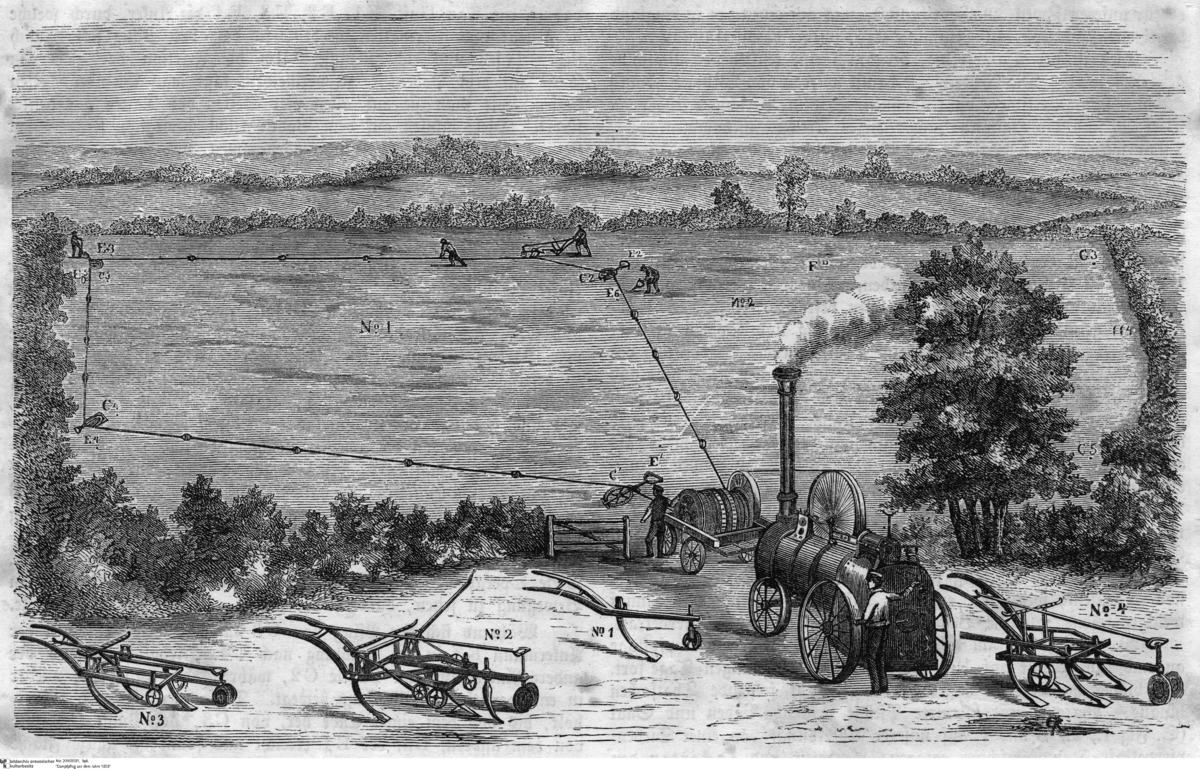Abstract
Technological advances in agriculture, such as the introduction of the steam plow, led to increased food production while also freeing up substantial numbers of rural workers, who migrated to cities and industrial centers, where they found employment in factories. Prior to these advances, working a field required a prolonged period of labor on the part of one plowman or the employment of several plowmen and teams of horses or oxen. The steam plow featured in the schematic illustration below, however, dramatically reduced the number of man-hours required for this task. The plow, which was moved across the field by a steel rope and winch via a system of pulleys, derived its power from a central steam engine parked on the edge of the plot. Harnessing this new form of power called for expertise in physics and mechanics and thus required a specialized, albeit much smaller, team of workers, who had to ensure that the plow’s frame did not break under stress and that all of the mechanical parts operated smoothly. Illustrations of various plow models can be seen in the foreground of the image. Wood engraving by unknown artist, c. 1860.
